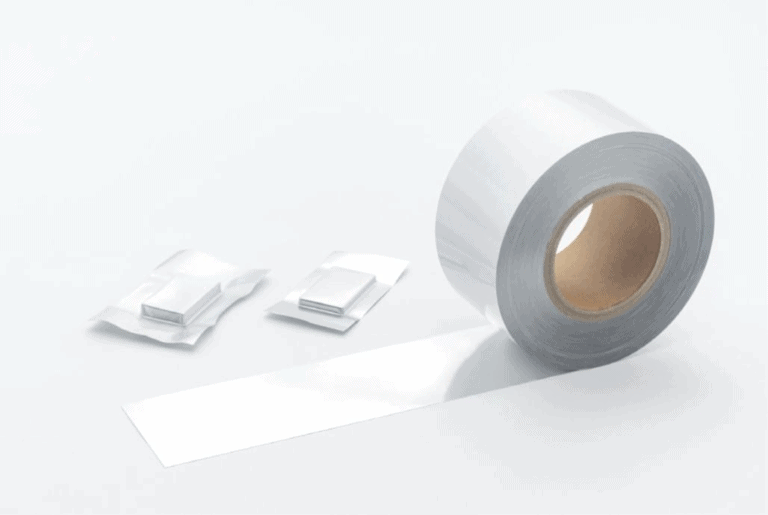Aluminum PET film is a special packaging material for lithium-ion batteries, and is often used in pouch batteries and blade batteries. The monolithic cells are sealed in aluminum PET film after assembly to form a battery. The aluminum PET film plays the role of protecting the internal electrodes and isolating the external environment. In soft-pack lithium batteries, aluminum PET film accounts for 10-20% of the total material cost.
According to different packaging forms, lithium-ion batteries can be divided into three categories: cylindrical lithium batteries packaged with stainless steel materials, square lithium batteries packaged with aluminum alloy materials, and soft-packaged lithium batteries packaged with aluminum PET films.
1) Structure composition of aluminum PET film for soft package lithium battery
Aluminum PET film flexible packaging can be divided into three layers, and the layers are combined by adhesives.
Inner layer—multifunctional layer (thickness 40μm~80μm)
The inner layer is designed for the electrolyte in lithium-ion batteries and has a better effect on chemical stability. As a stable composite layer and heat-sealing layer, film materials such as polypropylene, polyethylene, ethylene acrylic acid copolymer, polypropylene or ionomer resin are mostly used, which can improve the electrolyte resistance of the packaging material and ensure Ultimate battery performance, longer life.
Intermediate layer – barrier layer (thickness 35μm ~ 40μm)
The aluminum foil in the middle layer is a barrier layer. Its main function is to prevent moisture from entering the battery and electrolyte seepage from the inside. It needs to have good barrier performance, cold stamping performance and double-sided composite performance.
Outer layer – protective layer (thickness 15μm ~ 25μm)
The reason why the outer layer is called the protective layer is because the outer layer material used has good heat resistance (temperature is 160 ° C ± 15 ° C), abrasion resistance, puncture resistance and bending resistance, so it is very important for the barrier The layer has a very good protective effect. In addition, there are certain requirements for cold stamping formability and printability. Considering the cost of the outer material, we usually choose polyester and nylon non-ferrous metal processing film materials.
2) Production process of aluminum PET film for soft packaging lithium battery
In production, the main processes used in aluminum PET film are divided into dry method and thermal method. The dry process is to bond aluminum and polypropylene with an adhesive, and then synthesize them in a dry pressed state; the thermal process is to use polypropylene porous foam material to bond aluminum and polypropylene, and after a slow temperature rise Pressed, synthesized under the state of hot pressing.
Dry process route
The main advantages of dry-process aluminum-plastic film are good deep-drawing performance, excellent short-circuit resistance, less surface defects, fast manufacturing speed, simple procedure, and low cost. However, its peeling force is small, and the properties such as electrolyte resistance and water resistance need to be guaranteed by adding special adhesives.
Thermal process route
The aluminum PET film produced by the thermal process has a strong bonding force between the aluminum layer and the polypropylene layer, and the ability to prevent the electrolyte from swelling and the inner surface layer from falling off is improved. However, this specially treated binder needs to be melted at a higher temperature to play a bonding role. Due to the difference in the shrinkage coefficient of each material, it is easy to curl inward during the cooling process, and the appearance and cutting performance are poor. In addition, heating makes the material brittle, and its deep-drawing formability is poor, its short-circuit resistance is poor, and its preparation process is relatively complicated.
In summary, the dry composite process is more common in the process of preparing aluminum-plastic films, and it is more widely used, such as mobile phone batteries and other batteries that require high energy and heavy, electric vehicles and other large-power, high-capacity power batteries; thermal method Compounding is generally only used in 3C and other fields that do not require high battery capacity.


